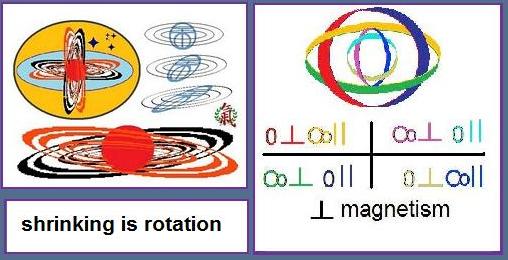
Occam's Razor & Matrix Methods of the New Physics
L. Edgar Otto (the Pe Sla) October 22, 2011
So I add to the view of at least planes, branes, that these are also knot like objects with rules that from some defining view of a structure seems to describe impossible objects.
Scientific American book club promotes two new books- A new one by Pinker (who I find makes a great contribution to how we see and order three space thus beyond) and Lisa Randall where she too has a 4 or 5 dimensional theory of the bulk of things between two 4D branes in a small box describing her own theory. But how does this compare to a more abstract and less particle physics oriented model of the universe where the banes clash periodically. For that matter Penrose has a book there too which has such a cycle where he says what we think of as the big bang is really in the future for another cycle of a big bang. (I would have expected this from his general comments on entropy.)
This is what I was trying to express to Pitkanen in a comment- that these four and five dimensional theories are the beginning of descriptions for higher spaces as perhaps most of what we need to know of a unified theory of physics. Few seem to make this leap smoothly- and with the vague notions where string and even M theory is not just a stepping stone- nor the clarity of the matrix and other combinations of things as in Kea's applications of which if the physics were not so important I would go a little deeper into the philosophy of it (as this Occam's Razor post hints of even if this is a problem of how we do science in the first place.)
It is a small conceptual step from 3 + 1 where it applies to space and 6 + 2, but in the arrangement of inferred and superimposed things, or doubled things, these are the fault lines of all such numbers that in a sense slice through some arbitrary unity of elements in a matrix- one that may ultimately be a "pataphysics", that ultimately vague other things may exist but are not necessarily relevant to what we are asking of uniqueness and the algebra of what seems physicality if not necessity.
So we can arrange elements in a matrix, as if these were various interconnected links or knots- we can use topological methods- but in the free invariant tangling we have not always imposed a logic of ordering such fields as in the Karnaugh maps by our theory or by stumbling on a matrix-brane that is itself a measure of itself as a probable state and grounding for other theories depending on such probabilities and variations of them.


* * * *


No comments:
Post a Comment